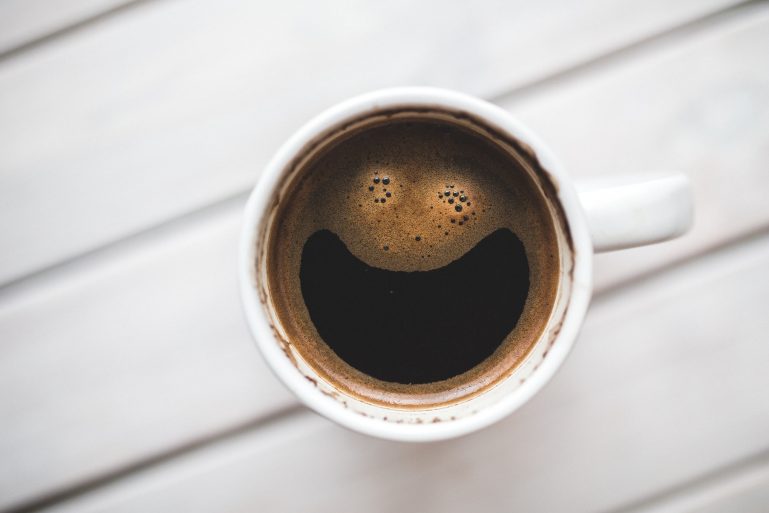
How Much Should I Charge for a Cup of Coffee?
A coffee shop in Greenpoint, Brooklyn hit the headlines last month for their decision to offer a $10 latte.
Newspapers and locals quickly lined up to condemn this latest example of bourgeois, yuppie, hipster (choose your favorite) excess: ‘How can the owners possibly think it’s ok to charge that much?’, ‘What kind of idiot pays that much for a coffee?’ ‘Won’t somebody, please, please, think of the children!’
While for most people this whole situation is best filed under ‘victimless crime’, the episode does present us with an interesting opportunity to think about what goes into the price of a cup of coffee. For many coffee shop owners, coffee can contribute upwards of 40% of their overall revenue, so getting the most bang for your beans is vital. For shop owners who struggle with how to price coffee drinks, there are some basic things to consider. I’ve discussed a few of them below.
It’s Not (Just) About the Beans
First thing’s first, the cost of the coffee you’re selling should never be a direct function of the cost of the beans you’re buying. Sure, great quality beans make a better cup of coffee, and people are willing to pay for quality, but it’s far from the only consideration.
Remember: You can sell the same cup of coffee at a gas station in Idaho, a football stadium in Winnipeg, or in a five-star hotel in Abu Dhabi. And in each location, you’ll find that consumers are willing to pay a completely different price.
It’s Not (Just) About the Overheads
Nor should your price be based on the perceived cost of your overheads, materials, and labor. Of course, you have to carefully track the costs associated with the creation of each cup (equipment, barista, paper cups, etc.) but your asking price should NOT be defined solely by your costs.
It’s About the Customer
The best way to start thinking about pricing is to put yourself into the role of consumer. Consider the context in which you are willing to pay the most for coffee. What is it that makes you feel comfortable paying a premium? The service, the location, the environment, the cleanliness, the perceived quality of the product, the perceived skill of the barista, and more all contribute to the price you’re willing to pay. As a small business owner, these factors are yours to control. Something as seemingly unrelated as an unclean restroom can decimate the amount your customers are willing to pay for your coffee. They’ll be thinking ‘if they don’t clean there, where else don’t they clean.’ Take a look around your store and consider which of these factors might be letting your price down.
It’s About Your Value, Not Your Costs
When Starbucks came along and ushered in the coffee revolution, they charged $3-4 for something that had previously been sold for $1-2 (and cost them about 50 cents to make). For most businesses, entering a market this way would be a sure fire way to go bust in months. But Starbucks made it work. How? They took something that was seen as a commodity and turned into a luxury indulgence. They transformed a product that was previously about ‘need’ and turned it into something that was about ‘desire’. If you are selling to meet a need, you will always be forced to compete on price. Competition on price becomes about who can operate on the thinnest margins. Dunkin Donuts do an excellent job of making this strategy work for them, with high volume and a great ability to sell associated products (donuts, breakfast muffins, etc). As a small business, however, you are destined to lose this game. If, however, you are selling to feed a desire, you are able to sell on value. You can create a relationship between the perceived quality of the indulgence and the price-point. It’s not for nothing that markups on wine have long been the envy of the world (or that we are now hearing more and more about coffee tasting ‘flights’ and coffee ‘cupping’ in general). FYI: For those who are able to assure their customers that their product is ‘worth the price’, coffee is now enjoying markups similar to wine (300%).
It’s Not Just About the Coffee
It’s important to offer a diversified product line that sits across a range of price points. As a rule, you want every single person who comes into your store to spend something. And you want every single person to spend as much as they feel comfortable with. The basic cup of coffee is, therefore, just an entry point. Add-ons like vanilla syrup and double shots offer a great opportunity to increase your average ticket size. An intelligent and pro-active attitude to cross-selling will also insure your average ticket is pushed upwards. Think about the strategic placement of delicious cupcakes and other impulse baked goods. Think also about encouraging your staff to upsell, ‘would you like a muffin with your latte this morning?’. As they say, you don’t ask, you don’t get. The right price for your coffee will always depend on a number of variables. But remember: If you choose how to price coffee with the customer in mind you won’t go wrong.
Want to try ShopKeep for yourself?
Just answer a few easy questions.
Need help finding the right point of sale?
Just complete the form. We’ll call you right back to explain how ShopKeep can work for you.
Hit the ground running.Sprinting, in fact!
Read our free, comprehensive guide, Small Business 101, to learn all you need to know about starting a thriving business.

